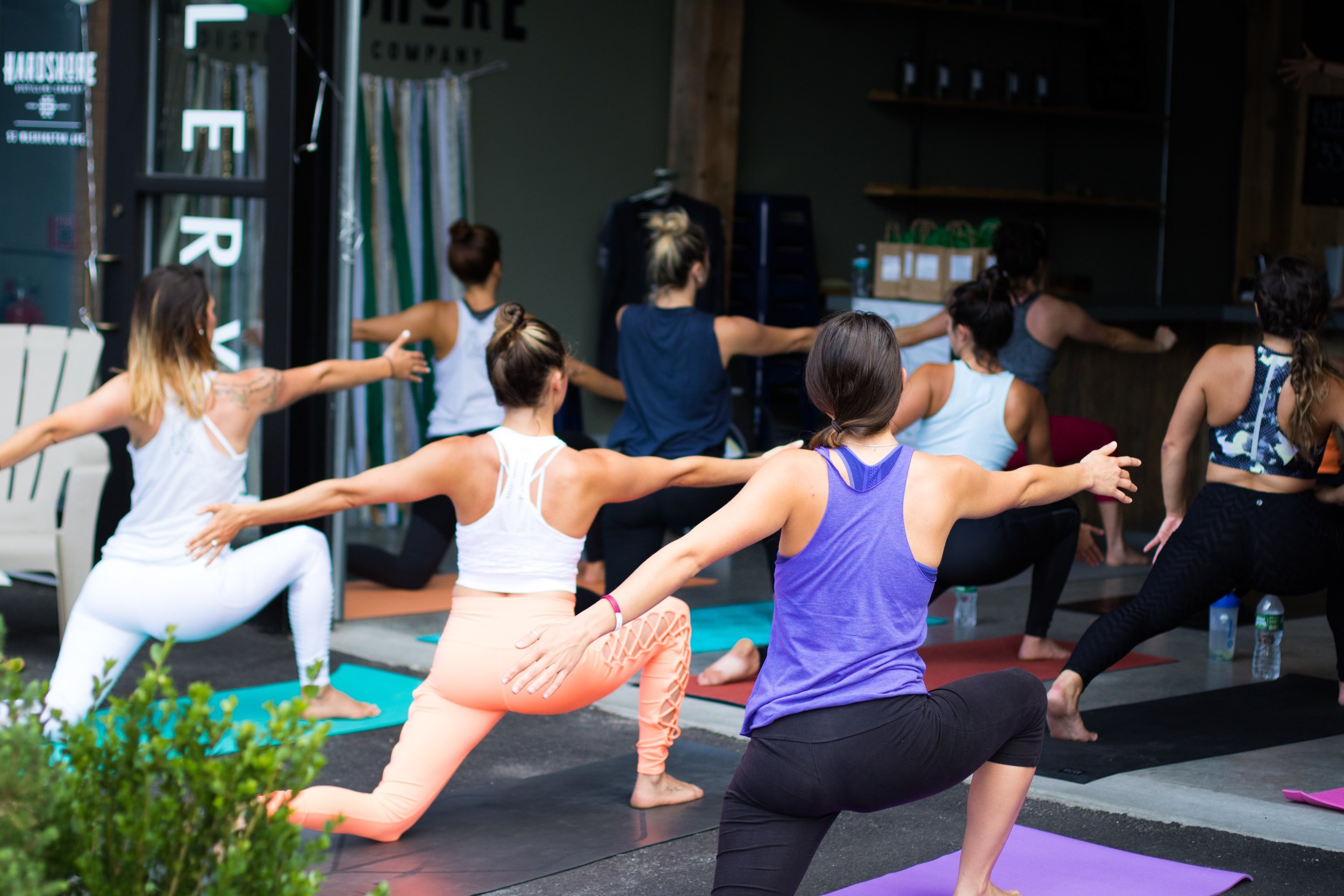From Burnout to Bliss: The Ultimate Self-Care Guide for Yoga Teachers
As a yoga teacher, you likely spend your days guiding others towards inner peace and wellbeing. But what about prioritising your own self-care?
It's easy to get caught up in the demands of teaching and forget to take care of yourself. Self-care is crucial for staying grounded, inspired, and energised as a teacher. That's why I've put together this self-care guide for yoga teachers. In this post, I'll cover the importance of self-care for yoga teachers, common challenges you may face and practical tips for incorporating self-care into your daily routine.
Why Self-Care is Crucial for Yoga Teachers
Common Challenges and Burnout Prevention
Daily Self-Care Routine Benefits & Examples
Mindfulness for Yoga Teachers: Benefits & Tips
Setting Healthy Boundaries with Students
Stress and Burnout Management Strategies
Maintaining Your Own Practise is Vital to Your Self-Care Routine
Building a Support Network with Other Yoga Professionals
Time Management Tips for Busy Yoga Teachers
Why Self-Care is Crucial for Yoga Teachers
Teaching yoga can be both physically and emotionally demanding and draining on our own wellbeing. From managing classes to dealing with difficult students to keeping on top of social media, it's easy to feel overwhelmed and burnt out. That's why self-care is crucial for yoga teachers. By taking care of yourself, you can prevent burnout, reduce stress, and enhance the quality of your teaching.
Daily Self-Care Routine Benefits & Examples
One of the best ways to practice self-care is to establish a daily routine. This could include practices such as meditation, journaling or simply taking a few minutes to breathe and stretch between classes. By setting aside time each day for self-care, you'll not only feel more refreshed and energised, but you'll also be better equipped to handle the demands of teaching.
My daily self-care routine consists of:
hot lemon and water in the morning (before tea or coffee)
short 5-10 meditation practise
short 10 minute yoga practise or breath work (if I can’t get a full practise in)
in the evening, I journal for a few minutes or write a gratitude list
using essential oils before bed like lavender, chamomile, frankincense or geranium - or a mixture of them all to calm the senses
Incorporating Mindfulness Practices in Your Self-Care Routine
Mindfulness practices can be a powerful tool for managing stress and promoting overall wellbeing. Examples of mindfulness practices you could incorporate into your self-care routine include breath work, mindful movement or simply taking a few moments to tune into your thoughts and emotions.
I like to practise 5-4-3-2-1 as a mindfulness technique:
Sitting in a chair or kneeling on your mat, take a moment to get settled. Then, follow this simple instruction:
Notice 5 things you can see in the room that you are in. Maybe you see them every day. Maybe it’s something you haven’t noticed before. Take your time to soak in the colour, shape, position of the object. Why you like it, or you don’t.
Then, close your eyes. Listen to 4 sounds around you and notice them. Maybe its the kettle boiling, the radiator pinging, the children shouting, or a bus driving by.
Next, touch 3 things around you. Do they feel soft, hard, furry, smooth, warm or cold. Take a moment to soak in the feeling.
Next, smell 2 things. Maybe you can smell coffee brewing, dinner cooking, perfume, candles or essential oils. Take in the smell. Notice it. Is is pleasant? Do you enjoy it? Does it bring up emotions or memories?
Finally, taste. What can you taste in your mouth? How does it taster? Bitter, sweet, spicy, smooth?
By practicing mindfulness regularly, you'll be better equipped to manage the ups and downs of teaching.
Photo by Dylan Gillis
Setting Healthy Boundaries with Students
As a yoga teacher, it's important to set clear boundaries with your students. This could include establishing rules around communication, respecting personal space or setting limits on how much you're willing to give emotionally. By setting and communicating healthy boundaries, you'll create a safer and more respectful environment for yourself and your students.
Stress and Burnout Management Strategies
Even with a solid self-care routine in place, it's still possible to experience stress and burnout. Signs of burnout include feeling exhausted, detached or irritable. To manage stress and prevent burnout, consider strategies such as delegating tasks, prioritising rest or seeking support from a therapist or mentor. It's also important to create a supportive work environment by establishing clear expectations and boundaries with colleagues and studio owners.
Maintaining Your Own Practise is Vital to Your Self-Care Routine
As a yoga teacher, you know the many benefits of practicing yoga asanas. But did you know that incorporating these practices into your own self-care routine can be incredibly beneficial? Not only can yoga asanas help you stay physically fit and flexible, but they can also help you cultivate a deeper connection to your body and breath. Our own practises often fall by the wayside when we are teaching so many classes, but it’s so important to stay dedicated to our own practise.
Your own practise does not have to be a 90-minute vinyasa flow, it could be 10 minutes of breath work, followed by a few sun salutations and a long 20 minute svasana. It could be a slow, mindful walk on the beach or in the forest. It’s your practise - you get to decide what it looks like. You could even practise seated poses while watching tv.
Maintaining your own practise is important for many reasons including:
Personal Growth and Development: Practicing yoga helps teachers to deepen their own understanding of the practice and improve their skills. As teachers continue to learn and grow, they can offer more valuable guidance and yoga philosophy to their students.
Physical and Mental Health: Having a consistent yoga practice helps teachers maintain their physical and mental health. By keeping their own bodies and minds healthy, they can show up as the best version of themselves for their students.
Authenticity and Inspiration: When teachers have their own consistent practice, they are better able to connect with and inspire their students. By embodying the practice and its teachings, they can authentically guide and motivate their students towards their own practice and growth.
Building a Support Network with Other Yoga Professionals
Don't underestimate the power of support from other yoga teachers or wellness professionals. Being a yoga teacher can often be a lonely place. Whether it's attending a yoga conference or reaching out to a mentor, seeking support can help you stay inspired, motivated, and connected to the wider yoga community. By building a strong support network, you'll also have a place to turn when you need help or guidance.
Try reaching out to another yoga teacher to find an accountability buddy to share your wins and your challenges and someone to stay accountable to as you declare your dedication to your weekly practise or your intention to book and promote a workshop. I have an accountability partner who is an EFT practitioner (Emotional Freedom Technique). While we are not doing exactly the same thing, we are in the same area of teaching health and wellness, so it’s a good match for us to share ideas and help support each other.
If you follow me on Instagram, I post my #WeeklyWins on Fridays. I take time each week to jot down my wins, because being a #solopreneur can be hard, lonely and overwhelming, so tracking small wins can make a BIG difference. I also love to cheer others on, so come and join in. It’s a small way to create a consistent practise to celebrate YOU!
If your looking for other ways to support yourself or grow your business, I offer 1:1 wellness business coaching to help you navigate entrepreneurship with a greater sense of peace, purpose and freedom.
Time Management Tips for Busy Yoga Teachers
Finally, finding time for self-care can be a challenge, especially when you're juggling a busy teaching schedule, on top of caring for your family or running the household. But remember, self-care doesn't have to be time-consuming or complicated. Even small moments of self-care, such as taking a few deep breaths or stretching between classes, can make a big difference in your overall wellbeing.
Here’s a few tips for finding time for self-care as a busy yoga teacher:
Schedule self-care into your calendar: Treat self-care as an essential part of your schedule and block out specific times for it. Make sure to prioritise this time and avoid scheduling anything else during it.
Use small pockets of time: Look for small pockets of time throughout your day, such as in between classes or during your lunch break. Even a few minutes of self-care can make a big difference. I often listen to podcasts on personal growth while eating my lunch.
Combine self-care with other activities: Try to combine self-care with other activities that you do regularly. For example, you could practice mindfulness while walking to and from your studio or do some yoga asanas while waiting for your students to arrive.
Delegate and outsource: Consider delegating or outsourcing some of your work responsibilities to free up more time for self-care. This could include hiring an assistant or outsourcing administrative tasks.
Learn to say no: Saying no to additional commitments can be difficult, but it's important to prioritise your own self-care. Learn to set boundaries and say no when you need to.
Make self-care a non-negotiable: Treat self-care as non-negotiable, just like any other important commitment in your life. Remember that taking care of yourself is crucial to being able to provide the best possible teaching experience for your students.
In conclusion, self-care is crucial for yoga teachers. It can prevent burnout, improve your teaching, and enhance your overall wellbeing. By incorporating these tips into your life, you can prioritise your own self-care and continue to guide your students towards inner peace and balance.
Let me know which tips you’re going to try, or better yet, share some tips in the comments below that I didn’t mention. I’d love to know what works for you!





